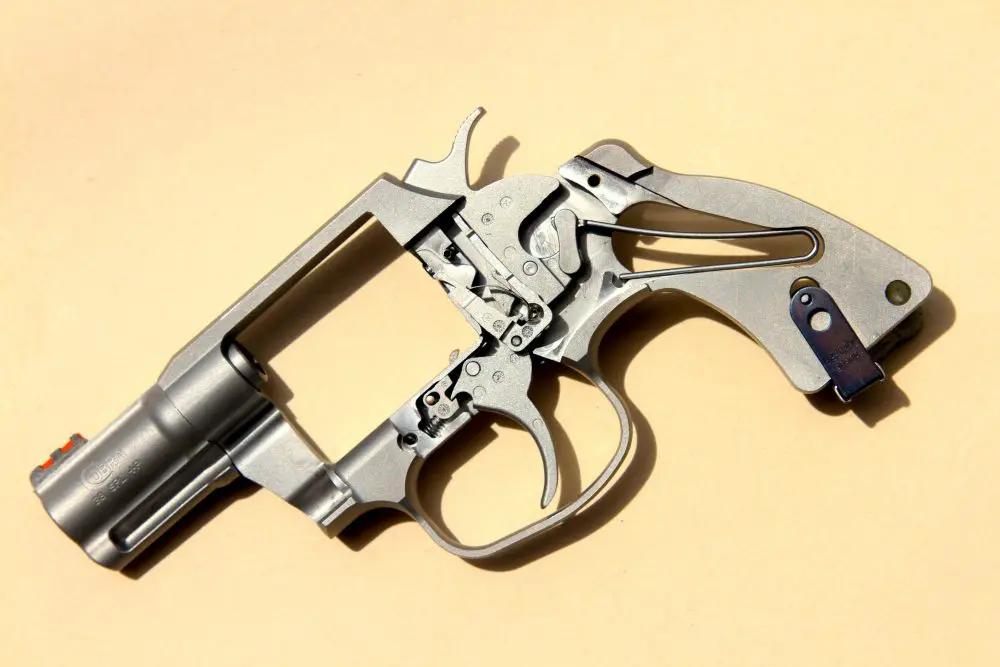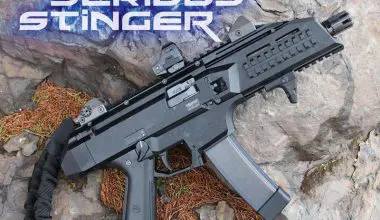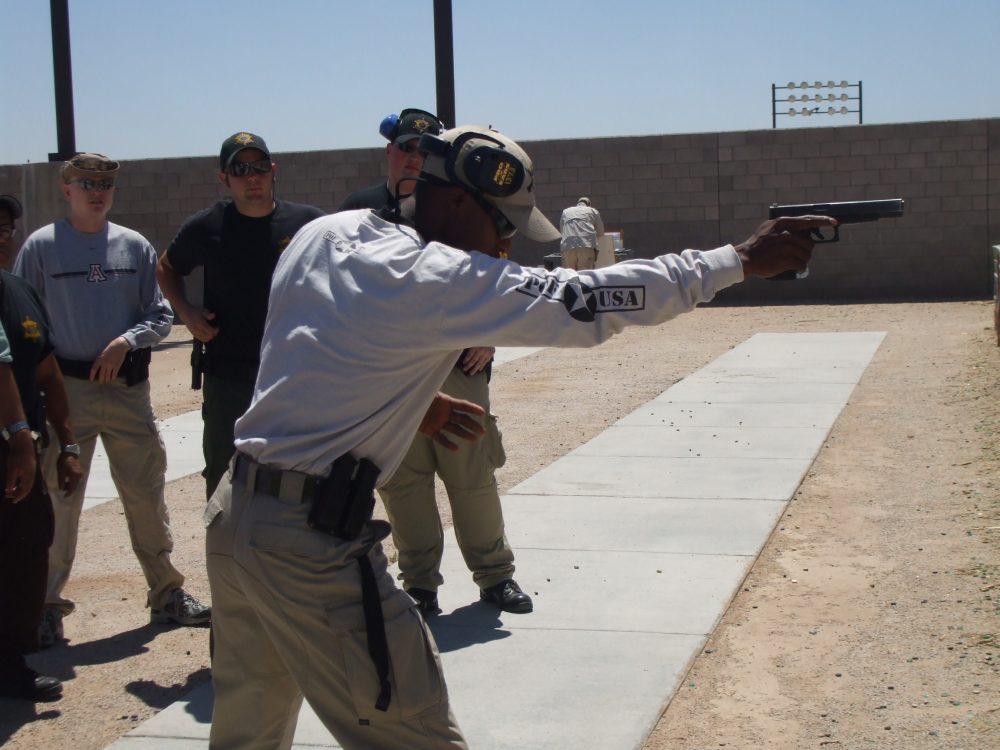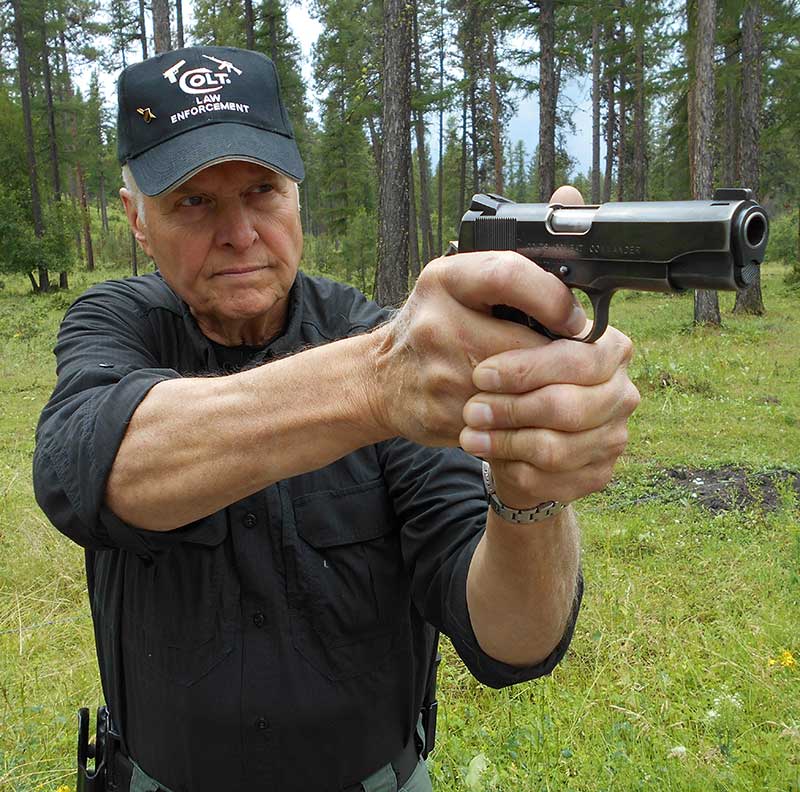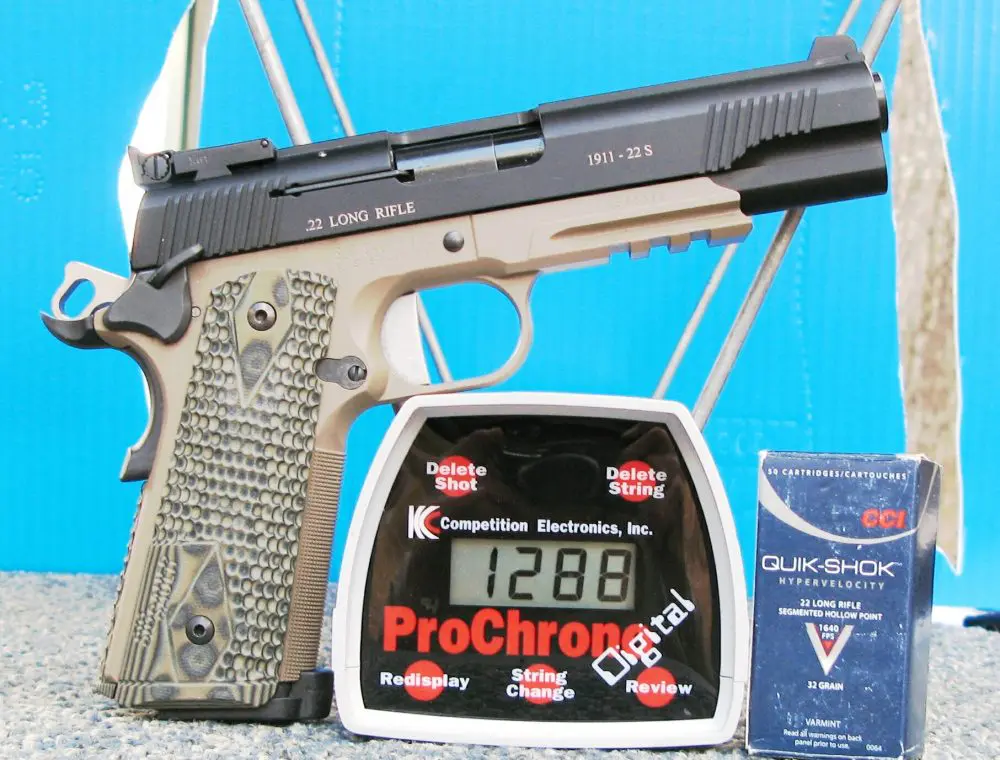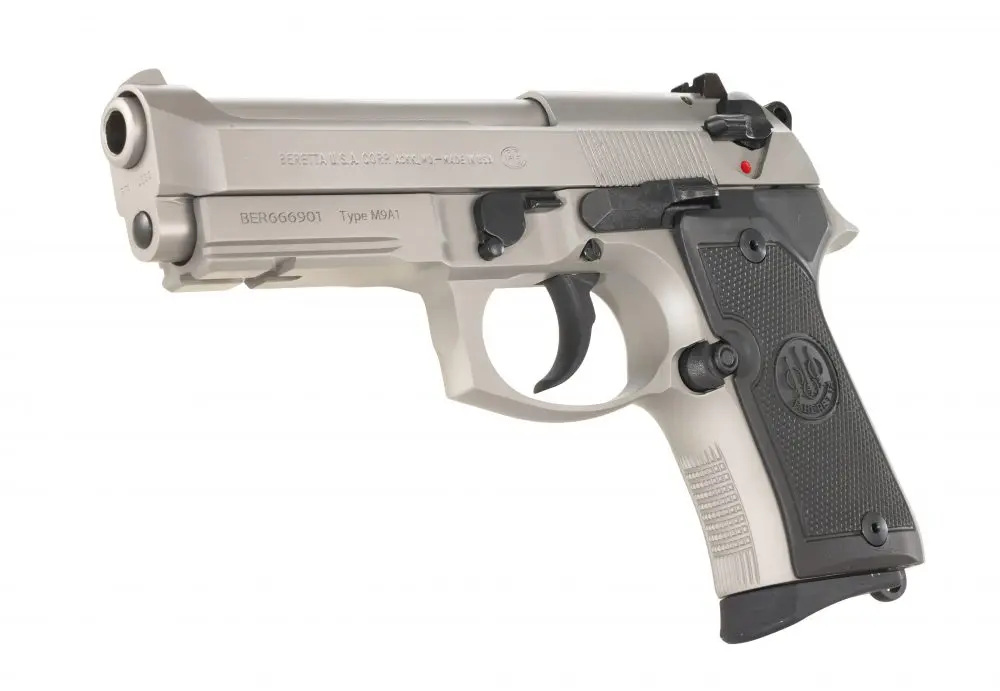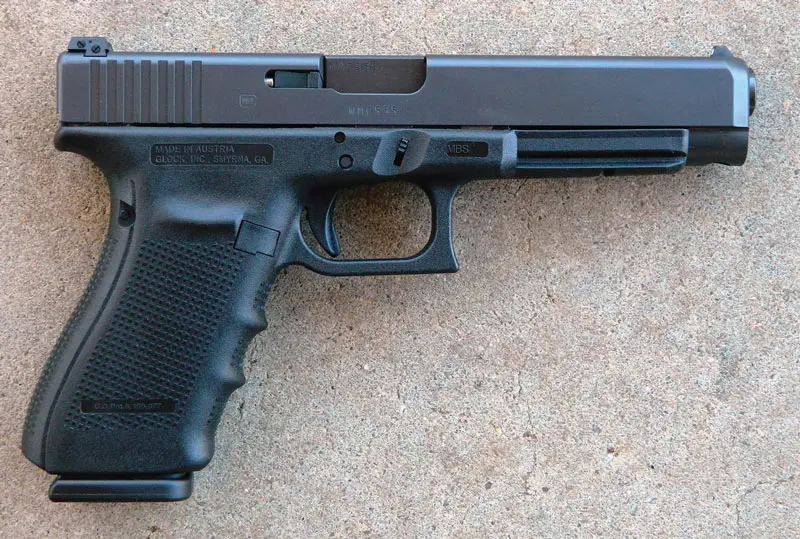
NEW handguns and new models of existing handguns are introduced every year. Many are specialized, but occasionally one has both practical and tactical value. The new Glock G41 is one such pistol.
While the concealed-carry handgun market is among the largest single segments in America, service-grade and competition handguns are also important. Competition and sport are important reasons for owning a handgun. The new long slide Glock is an excellent all-around go-anywhere, doanything pistol.
The G41 is in some ways simply an elongated Glock G21, Generation 4, as the G21 is clearly the base pistol. But there are design features unique to the G41.
Table of Contents
DESIGN FEATURES
For example, although the slide and barrel are longer than the G21, the recoil spring guide and spring are not extended. There is no need because, unlike the long slide 1911, with its heavier slide and barrel, the long slide version of the Glock 21 is fractionally lighter than the standard pistol. This neat trick is achieved by use of a specially designed narrow slide that is the same width as the Glock G34 .40-caliber slide. The advantages of a longer sight radius and better balance are gained without a weight penalty. From both engineering and practical standpoints, the G41 is impressive.
The G41’s design makes for an interesting combination as the frame narrows to meet the slim slide just forward of the takedown levers. The balance of the G41 is neutral, allowing excellent results in rapid fire. The whole package makes for an attractive duty pistol for all-around use as well as for tactical teams in agencies that issue the Glock.
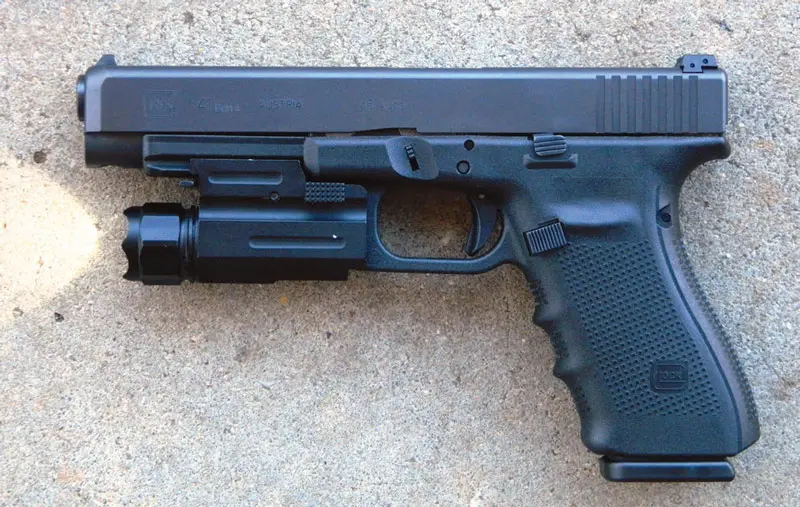
ANSWERING COMPLAINTS
While the slide design is remarkable and gives the G41 unique properties, the pistol also has the basic improvements of the Generation 4 Glock. The G41 is supplied with a total of four spare grip inserts. My hands are average to a bit smaller than average. The small grip insert works well, though I can also use the medium size insert.
There’s a difference between controlling the pistol in slow fire on the range and retaining it in action. The new grip frame is an excellent design that answers complaints concerning the largeframe Glock and hand fit.
The grip design differs from the RTF (Rough Texture Frame) that some disliked. The RTF is OK in short firing sessions. For those who practice hard and often with high round counts during each trip, the RTF becomes too abrasive. The new design has flatter dots that give excellent adhesion with less discomfort.
This is the first large-frame Glock I have fired that I felt in control of and as comfortable as the 1911. It isn’t easy to fit 13 rounds of .45 ACP into a grip frame that accommodates normal-sized hands, but the G41 does.
The Glock trigger system is manageable and offers a rapid reset. Complaints concerning Glock accuracy are traceable to a lack of understanding of the trigger system and improper sight alignment, sight picture, and trigger press.
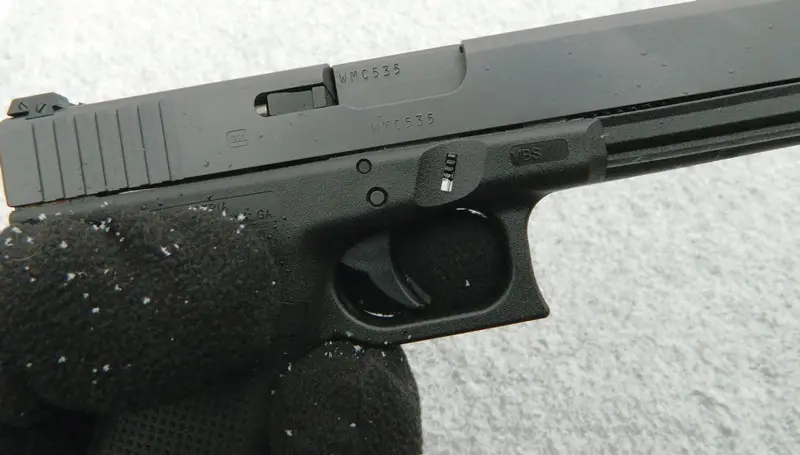
RESET AND RECOIL
Measured with an RCBS scale, trigger compression on this specimen breaks at six pounds even, a little heavier than the specified and most often encountered 5.5 pounds. My personal Glock 17 Generation 4 trigger breaks at a little over six pounds, so perhaps the pistols are delivered with a heavier trigger action lately. In any case the trigger is manageable and no impediment to practical accuracy. Trigger reset is as rapid as any pistol and faster than most.
The recoil spring and guide are standard G21. The design is similar to a custom-grade recoil reducer. The recoil spring arrangement is intended to enhance smooth function and reduce recoil. The main spring runs on the guide rod with another shorter spring running outside the inner spring.
From the introduction of the G21 in .45 ACP, I have felt that the big Glock is among the softer kicking .45 ACP service- grade handguns. If this spring adds to function, good. If it makes the pistol’s felt recoil less, that’s good too, but I cannot state positively that it does either.
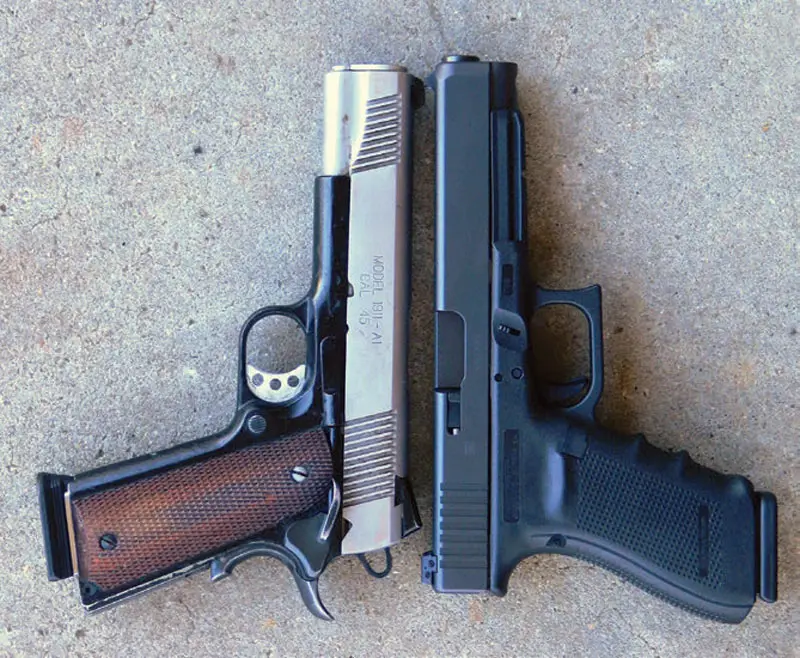
LEAD BUILDUP
The Glock features a polygonal rifled barrel. This rifling produces an efficient seal of propellant gas and may exhibit improved accuracy by deforming the bullet less. But there is simply no accommodation for lead buildup, which could result in dangerous pressure spikes. I mention this because for economy, many of us reload our cartridges. In this case, plated bullets such as those offered by Rainier Ballistics are an answer. Quality jacketed bullets such as Montana Gold and Hornady XTP are also good choices.
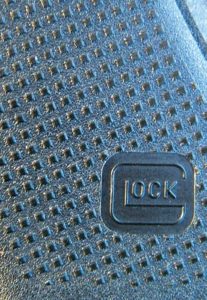
A few words on the Glock’s “unsupported” chamber. Some feel the Glock does not offer the same case head support as other pistols. If you look at the chamber at about the six o’clock mark, the edge of the barrel has been broken (or throated, as the 1911 man says). This ensures the pistol will feed any type of nose design.
I have examined Glock pistols after a case rupture. Normally the culprit is a handload, although in one case it was factory ammunition from a small maker no longer in business. Is the problem exaggerated? Perhaps, but lead buildup and a hot loading may bulge or blow the case at the hot spot of that small crescent where the case is unsupported.
As for the sights, well, they are Glock sights, plastic with white line inserts. The rear sight is the seldom-seen Glock adjustable sight. It works surprisingly well. The sight picture is bold and can be acquired quickly.
HEADING TO THE RANGE
After initial handling to determine the correct grip insert, the pistol was dry fired for familiarity, lubricated and taken to the range. The Glock is supplied with three magazines. While two magazines are minimal supplying a self-loading handgun, three are better.
The pistol came out of the box running and, 650 rounds later, hasn’t stopped for any reason. This was no weekend project, and a mix of shooters have fired the pistol and given it a clean bill of health. A pertinent observation shared by all is that while the pistol is longer than the G21, it isn’t much longer than a 1911 Government Model (measured beavertail to muzzle).
Fully loaded, the pistol weighs about the same as an empty steel-frame 1911. That is food for thought. This makes the G41 a good choice for a duty handgun. With 13 rounds on tap and a light rail, the pistol has many tactical advantages.
SHOOTING TESTS
I have enjoyed better results with this pistol than any Glock I have fired. This reflects my experience with other handguns. I fire the SIG P220 better than the P229, the Government Model 1911 better than the Commander, and the Glock 17 better than the Glock 19.
While smaller guns are fast into action and more than accurate enough for personal defense, in high-speed drills and running at the maximum effort, the longer sight radius and superior balance of a longer firearm will prove advantages. For those who wish to pursue every advantage, the G41 exhibits excellent results on the firing range.
Even when firing full-power defense loads or +P loads, the G41 is comfortable to fire. After the initial acclimation period, a good quantity of Black Hills 230-grain FMJ load was fired. With this hardball load, it was no mean feat to cut out the X ring of a silhouette target at 25 yards. I set up an Innovative Targets steel reaction target at 25 yards and loaded the Black Hills 230-grain JHP. I favor the balance of expansion and penetration in the 230-grain JHP, and this loading is accurate and reliable, with a clean powder burn.
Focusing on sight alignment and controlling the trigger, allowing time to reset between shots and acquiring a cadence of fire, the steel target was kept rocking. That is impressive considering there are 13 rounds available in this relatively light package. While the proper attitude is that the shot being fired is the only important one, a reserve of ammunition is an excellent feature.
The pistol’s magazine release and slightly beveled magazine well make rapid replenishment of the ammunition supply smooth and rapid. The magazine is tapered to a single feedway at the top, which helps. The magazine locks in positively and drops free when empty. I fired handloads in the Glock with good results. I have also fired steel-cased factory ammunition. I would be remiss not to confirm that the Glock’s extractor and chamber are compatible with steel-cased ammunition.
It is reliable with these loads. Hornady Steel Match in particular gave good results. Compared to brass-cased loads, these cartridges are economical and offer a good training resource.
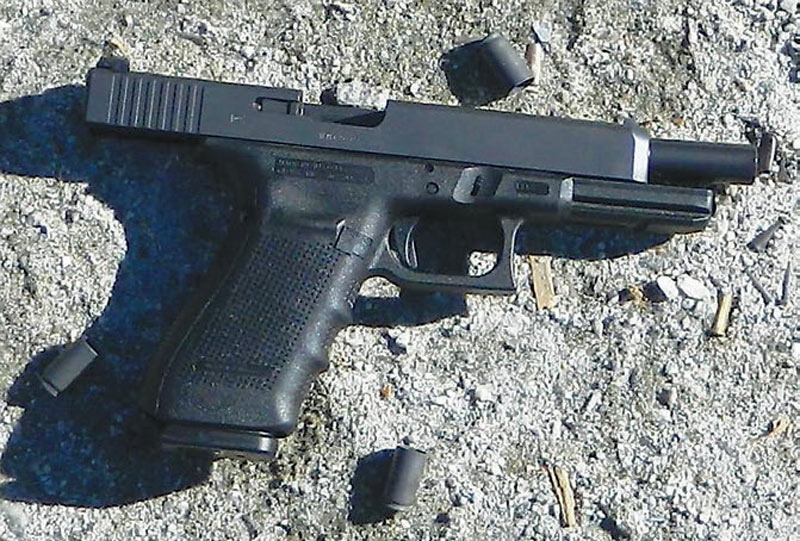
ACCURACY
Accuracy was consistent across the board, with most loads averaging about 2.5 inches for five-shot groups. Like all quality handguns, the G41 prefers one load to the other. By the same token, the bottom line is that the author is striving to achieve this type of accuracy at 25 yards, and the gun and ammo combination is more accurate than I am able to demonstrate.
As an example, the Remington subsonic load at one point placed three rounds into 1.5 inches—quite a feat for this shooter even with the aid of shooting glasses with a bifocal component. The five-shot group was 2.1 inches, which is excellent by any standard.
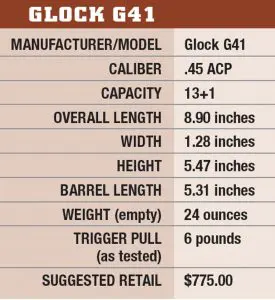
We have all experienced the extraordinary group. On-demand accuracy means more. The pistol may be counted on for 2.5 inches with quality ammunition. I do not use a mechanical rest but stay in touch with reality. The Glock is comfortable to fire off the bench rest. The backstrap doesn’t have any sharp edges. The relatively low bore axis of the pistol limits muzzle flip.
A sure way of testing cycle reliability is to fire the pistol with one hand and also with the weak hand. If you’re going to allow a short cycle or the pistol is marginal, it will short cycle in this drill. The Glock did not short cycle in any onehanded drill.
There have been reports of mounted lights affecting the cycle reliability of the Glock. I have no personal experience with such a malfunction, but it seems a credible concern. I fired three magazines with a light attached to the rail. One magazine was a target handload, another Hornady Steel Match 230-grain load, and one Black Hills 230-grain JHP +P. All went well in this limited test. Your personal gun should be proofed in this manner if you deploy the G41 with a mounted tactical light.
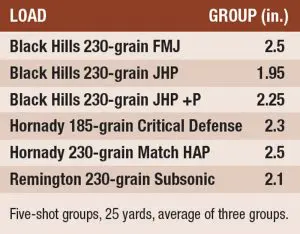
CONCLUSION
After firing a little over 650 rounds without cleaning, the G41 was field stripped. There was a gray coating on the connecter, probably from handloads using 231 powder, and the pistol did not exhibit unusual wear. No failures to feed, chamber fire or eject have occurred.
The G41 is a good handgun and a credible service pistol. It builds upon a reliable Glock platform, which is one reason I am unreserved in my recommendation, and the modest changes will benefit the shooter in practical shooting.
Of all the Glock pistols I have handled, this is the shooter—I like and trust it. Here is a handgun you can carry on duty and then shoot an IDPA match with on the weekend.
